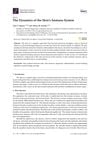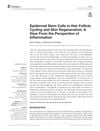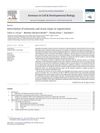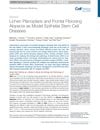TLDR Mast cells likely promote skin scarring and fibrosis, but their exact role is still unclear.
The review examined the role of mast cells in cutaneous scarring and fibrosis, presenting evidence both for and against their involvement. Mast cells were found to contribute to fibrosis by releasing mediators like TGF-β, chymase, and tryptase, which promote fibroblast proliferation and collagen synthesis. However, some studies indicated that mast cells might not be essential for wound healing or fibrosis, as genetic ablation did not significantly impair these processes in certain models. The review highlighted the complexity and context-dependency of mast cell functions, suggesting that their role in fibrosis varies with different types of wounds and healing environments. Further research was needed to fully understand their interactions and potential as therapeutic targets.
79 citations
,
January 2019 in “International Journal of Molecular Sciences” Burn injuries in mice heal similarly to humans, with inflammation and cell changes normalizing over time.
 79 citations
,
January 2018 in “Wiley Interdisciplinary Reviews-Developmental Biology”
79 citations
,
January 2018 in “Wiley Interdisciplinary Reviews-Developmental Biology” Understanding how baby skin heals without scars could help develop treatments for adults to heal wounds without leaving scars.
35 citations
,
October 2014 in “Wound Repair and Regeneration” The model helps understand scar contraction and develop new treatments.
 306 citations
,
April 2019 in “International Journal of Molecular Sciences”
306 citations
,
April 2019 in “International Journal of Molecular Sciences” The skin has a complex immune system that is essential for protection and healing, requiring more research for better wound treatment.
7 citations
,
August 2023 in “Frontiers in Immunology” Targeting TRP channels may help reduce excessive scarring.
 18 citations
,
November 2020 in “Frontiers in Cell and Developmental Biology”
18 citations
,
November 2020 in “Frontiers in Cell and Developmental Biology” Inflammation plays a key role in activating skin stem cells for hair growth and wound healing, but more research is needed to understand how it directs cell behavior.
 252 citations
,
April 2009 in “Seminars in Cell & Developmental Biology”
252 citations
,
April 2009 in “Seminars in Cell & Developmental Biology” The immune system plays a key role in tissue repair, affecting both healing quality and regenerative ability.
 80 citations
,
April 2018 in “Trends in Molecular Medicine”
80 citations
,
April 2018 in “Trends in Molecular Medicine” Lichen Planopilaris and Frontal Fibrosing Alopecia may help us understand hair follicle stem cell disorders and suggest new treatments.




